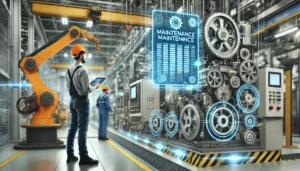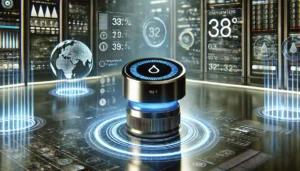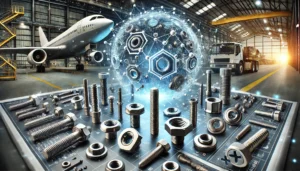With the introduction of 3D or additive manufacturing, different fields have been able to develop and expand because it allows the production of complicated designs and tailored parts at an exceptional rate and ease. In the custom machined parts production category, 3D printing creates an opportunity to take advantage of its benefits while also presenting challenges that affect production efficiency, design, and manufacturing processes.
Understanding 3D Printing in Manufacturing
3D printing is the process of making a three-dimensional object by delivering successive layers of material according to the specifications of its digital model. It allows object reproduction in sophisticated shapes that are difficult or even impossible to achieve with traditional methods of subtractive manufacturing. It is especially beneficial when creating parts with complex shapes, designing models, or even in low-volume production runs.
Advantages of 3D Printing in Custom Machined Parts Production
- Design Flexibility and Complexity
3D printing gives us the ability to produce intricate parts that have internal structures and features that are extremely difficult (or expensive) to manufacture with conventional machining methods. Because of this, there is more room for innovation and faster changes in the development phase.
- Reduced Lead Times
The use of 3D printing eliminates the need for molds and tooling, which reduces lead time significantly. This means that time taken from design to production is less. This leads to market entry being faster as well as quicker development.
- Cost-Effective Low-Volume Production
Due to low production requirements or custom parts including bespoke components, 3D printing serves as a much more cost efficient option as compared to traditional machining that needs expensive setups. This makes it a go to option for limited edition products.
- Material Efficiency
Unlike traditional manufacturing processes, where materials are extracted from much larger blocks, additive manufacturing uses only what is required to form the part structure. This is highly efficient when used in expensive or hard to find materials.
Challenges and Considerations
- Material Limitations
Although 3D printing offers metals, polymers, or composites, there is still a very restricted range of materials that can be suitable for high-performance or structural components when compared to conventional machining. Parts that have been produced using a 3D printer will not have the same mechanical properties as parts made from a conventional machine.
- Surface Finish and Tolerances
Unlike traditional machining, 3D printing processes tend to leave surface finishes and dimensional tolerances unrefined. Some techniques like machining, polishing, or coating may be required to achieve specific requirements.
- Production Speed for High Volumes
3D printing works best for rapid prototyping and low volume production, but it is not highly efficient for large scale production. Tasks such as building walls and the build size are significantly slower compared to traditional machining.
- Equipment and Expertise
Investment on equipment and expertise is necessary to implement 3D printing in production. Businesses need to determine the cost-benefit ratio along with the availability of required skills to operate, design, and use the technology efficiently.
Integrating 3D Printing with Traditional Machining
The best results are likely to arise when employing hybrid approaches that utilize both 3D printing and traditional machining. For instance, a 3D printer can be used to create a prototype or complex geometries which are further refined and finished with basic machining for improved surface quality and precision. This broadens the advantages of the two technologies leading to improved production efficiency and quality.
Industry Applications
- Aerospace
The aerospace industry has enjoyed the benefits of 3D printing through the creation of lightweight intricate parts which improve fuel efficiency. For example, General Electric employs 3D printing for fuel nozzle production for jet engines. Compared to traditional manufacturing, the 3D printed components are both lighter and stronger.
- Automotive
3D printing is used by automotive manufacturers for prototyping and mass customization of vehicles – parts can be modified and changed easily. 3D Local Motors have made headlines in the news with their 3D printing of vehicles that have the majority of their body built using additive manufacturing.
- Medical Devices
Within the medical sector, 3D printing makes it possible to create customized implants and prosthesis for each patient to improve functionality. By providing patient-specific devices on-time, the treatment is more effective and faster.
Future Outlook
While 3D printing is still emerging, its innovations are expected to significantly impact the future of individualized machined parts. Research is being performed to increase the available materials, improve the mechanical properties, and increase output efficiencies to make additive manufacturing more competitive than traditional machining technologies for many more uses.
In conclusion, the incorporation of additive manufacturing has revolutionized the creation of tailor-made parts by enabling flexibility in design, shortening the time needed to manufacture them, and making it cheaper to produce in smaller quantities. In spite of the hurdles that still exist, especially with regards to the materials used and the final surface quality required, the combination of 3D printing with conventional machining processes opens opportunities for new developments in the industry. By analyzing the particular needs of each case, manufacturers can use both technologies and maximize the results.










